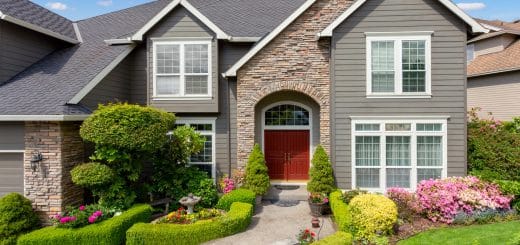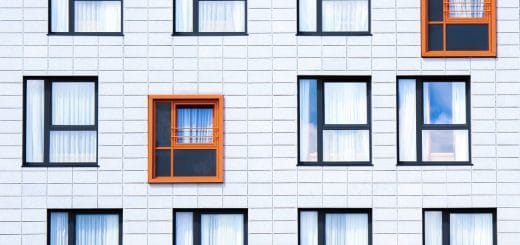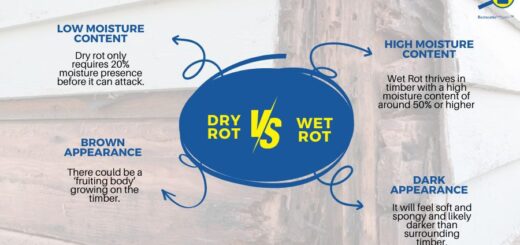Should I Restore an Old Shed or Build a New One?
Outdoor sheds are popular as an extension of your outdoor living space and serve various purposes, including gardening, storage, home offices, she-sheds, man caves, home gyms, reading nooks, and so much more! If you already have an old shed on your property that isn’t functional in its current state, you may be wondering what your best option is. Should you restore it or tear it down and build a new one? This is your guide to restoring old outdoor buildings… and how to know when it is time to let go and build a new one.
When Should You Restore and When Should You Build?
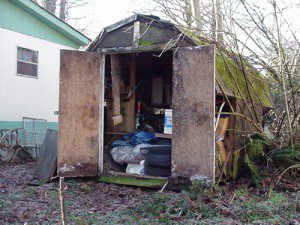 Breathing new life into an old building, especially if it holds sentimental value or has historical significance, makes for a meaningful project. Not to mention it is a fun adventure to see the transformation of before and after (don’t forget to take pictures)!
Breathing new life into an old building, especially if it holds sentimental value or has historical significance, makes for a meaningful project. Not to mention it is a fun adventure to see the transformation of before and after (don’t forget to take pictures)!
In many cases, restorationRestoration is the process of returning a property to its pr... More is the more cost-effective choice. This is especially true if it is only in need of manageable repairs. For instance, if there are minor rustRust is a reddish-brown oxide that forms on iron or steel du... More spots on a metal frame or isolated water damage. If the bones are good on your old shed and you are happy with the size and design, refurbishing is the way to go.
However, if the building’s structural integrity is virtually non-existent and it is a safety hazard (e.g., the wood of the walls and ceilings are rotten), it is best to build a new shed. If this is the case, you will start the adventure to build your dream shed from the ground up.
The following tips will guide you through restoring your outdoor storage building.
Conduct a Thorough Cleanout
If your shed is like most, it is full of clutter. Some of it may be valuable, while, let’s face it, most of it should have been disposed of a long time ago. Before restorationRestoration is the process of returning a property to its pr... More begins, you should clean everything out of the structureStructure refers to the framework or components of a buildin... More. This is to prevent damage to valuable items and help you see what repairs are needed. Here is what your cleanout should entail:
- Remove all items from the building (Discard items no longer needed and safely store those you do wish to keep)
- Remove existing flooring (if there is any) so that you can better see the foundation
- Pressure-wash the exterior and clean windows, doors, and hardware
- Sweep the interior and wipe down the walls
It is important to note that you do not need the inside or the outside to be squeaky clean. However, it should be clean enough to clearly see what you are working with, which will be necessary for the next step.
Inspect Your Old Shed for Damages
Once the shed is clean, it is time to see what the damages are. Regardless of what material they are made from, storage buildings are like any other structureStructure refers to the framework or components of a buildin... More. They require routine maintenanceMaintenance is the routine care, inspection, and repair of a... More to remain functional and retain their integrity. If left untended, sheds will become dilapidated over time. The first step of restorationRestoration is the process of returning a property to its pr... More is thoroughly inspecting the building to identify problem areas that need attention.
The Foundation
The primary issue affecting shed foundations is rot caused by excessive moisture. Avoid walking on damaged areas, as you do not want to fall through the floor. Visually you should be able to see excessive water damage. Water-damaged spots are darker in color and typically have a defined outline marking where the damage begins and ends. Other foundation issues to be on the lookout for include:
- Cracked or broken boards
- Termite, insect, or rodent infestation
- Sunken foundation which causes an unlevel floor
You may need to use a jack to raise the shed or remove any skirting to get a better view. Foundation issues will negatively affect the rest of your structureStructure refers to the framework or components of a buildin... More. Leave no stone unturned when inspecting the foundation.
The Walls and Ceiling
If your shed is made of wood, then you will want to look for signs of water damage, termites, warpingWarping is the bending, twisting, or distortion of materials... More, and cracks. On the other hand, if you have a metal structureStructure refers to the framework or components of a buildin... More, the primary concern is rustRust is a reddish-brown oxide that forms on iron or steel du... More. Make a note of all rustRust is a reddish-brown oxide that forms on iron or steel du... More spots and whether they are minor or significant.
The Roof
If your shed has a shingle roof, check for missing and damaged shingles. Interior water damage on the ceiling is an excellent indicator of where your issues will be on the top. If the roof is made of metal, check for rustRust is a reddish-brown oxide that forms on iron or steel du... More spots and holes that have developed.
Pests
It is important to note that unused buildings are notorious for attracting unwanted pests, including insects and rodents. Take precautions when entering the building for the first time as there may be wasp or hornet nests lurking on the ceilings, walls, and hiding in belongings.
Rodents tend to build nests and leave feces and urine on every surface in the structureStructure refers to the framework or components of a buildin... More. Mice and other rodents carry diseases that can be harmful to humans. Take precautions when handling rodent-infested items. Always wear gloves and wash your hands thoroughly afterward.
Contact your local trusted pest control company for an effective pest control solutionA solution is a homogeneous mixture of two or more substance... More moving forward.
How to Repair Damages
The severity of damage will vary from one shed to another. However, these general guidelines will ensure you are on the right track.
Repairing Rot and Water Damage
Water damage and rot are irreversible. You will need to remove the affected areas and replace them with new wood. It is crucial to choose treated wood because it is rot and insect resistant, meaning it will last longer than untreated wood. Sealing wood with a sealant will help protect against future damage and extend the material’s life.
Repairing Rust
RustRust is a reddish-brown oxide that forms on iron or steel du... More patches will spread if not properly repaired and sealed. This will negatively affect the structural integrity and visual appeal. For minor patches of rustRust is a reddish-brown oxide that forms on iron or steel du... More, sand out the rustRust is a reddish-brown oxide that forms on iron or steel du... More and then coat it with a rustRust is a reddish-brown oxide that forms on iron or steel du... More sealant that you can pick up from any hardware store. The sealant can be any outdoor metal paint or even a clear silicone.
For large rustRust is a reddish-brown oxide that forms on iron or steel du... More patches, it may be better to replace the piece of metal affected. You can purchase replacement panels to repairRepair is the act of fixing or restoring damaged property, m... More damage due to rustRust is a reddish-brown oxide that forms on iron or steel du... More easily. Treating rustRust is a reddish-brown oxide that forms on iron or steel du... More spots as soon as you identify them prevents the damage from spreading.
Repairing Doors and Windows
For safety and optimal function, your shed’s windows and doors need to be in working order. The extent of the repairs will depend on the damage. The job may be as simple as repainting the doors and windows and rehanging with new hardware. On the other hand, it may be easier and more practical to replace windows and doors.
Repairing the Roof
If the damage is minor, you can simply replace missing or defective shingles or pieces of metal. A complete roof replacement is a better option if the damage is extensive. Ensure the shingles you select either match the existing roof or, if you are opting for a replacement, match your overall color scheme. If you are replacing a metal roof, you can either color match or paint the entire roof a new color after installation.
Repairing Cracks
If your old shed is made of wood, inevitably, there will be small cracks. This is not a big deal and can be easily fixed and protected. Fill gaps in the walls, ceiling, and floor with epoxy. Applying a sealant will further protect the wood.
It is important to note that for large cracks, epoxy will not do the trick. You will need to replace those sections of the shed.
Preventative Measures
Moisture and condensation pose the biggest threat to the longevity of your restored shed. Lack of ventilation tends to be the cause, especially in metal buildings that often lack windows and only have one door.
Be sure to incorporate ventilationVentilation is the process of exchanging or circulating air ... More into your building. VentilationVentilation is the process of exchanging or circulating air ... More options include:
- Wall vents
- Ridge vents
- Venting skylight
- Power gable vent
Finishing Touches
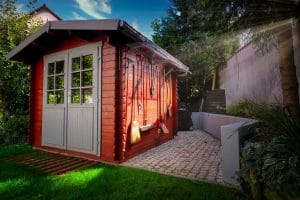 Once you’ve made all the necessary repairs to your old shed, it’s time to make it your own. A fresh coat of paint is the quickest way to give your old building a new, clean look. Make sure that you are using the appropriate type of paint (or stain). If you have a metal shed, use paint specifically for outdoor metal. On the other hand, if you have a wood shed, use outdoor paint specifically made for wood. Other finishing touches include:
Once you’ve made all the necessary repairs to your old shed, it’s time to make it your own. A fresh coat of paint is the quickest way to give your old building a new, clean look. Make sure that you are using the appropriate type of paint (or stain). If you have a metal shed, use paint specifically for outdoor metal. On the other hand, if you have a wood shed, use outdoor paint specifically made for wood. Other finishing touches include:
- Apply the flooring of your choice (e.g., carpet, tile, laminate, etc.)
- Install insulationInsulation is a material used in buildings to reduce the tra... More
- Wire electrical
- Plumb your space
- Install drywall
- Decorate and design the interior as you wish
The finishing touches for your shed will depend on how you plan on using your restored building. For instance, if you plan to store outdoor equipment, you will not need to finish out the interior. However, if you plan on making the new space your home office, you will probably want to install insulationInsulation is a material used in buildings to reduce the tra... More, drywall, and the whole nine yards.
Restoring an existing storage building is a great way to repurpose a structureStructure refers to the framework or components of a buildin... More that may otherwise end up in the landfill, not to mention the satisfaction of restoring your old shed to its former glory!










